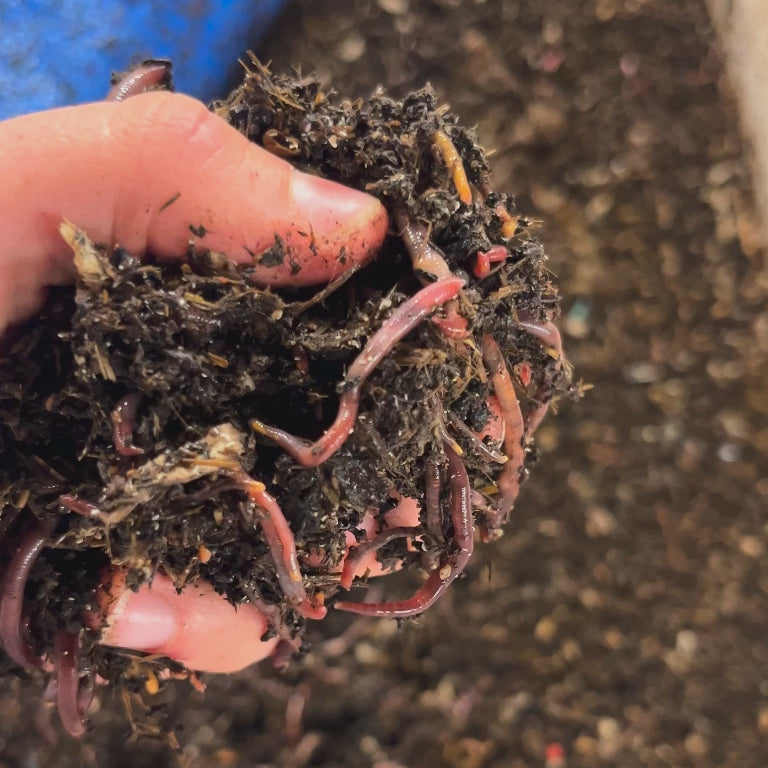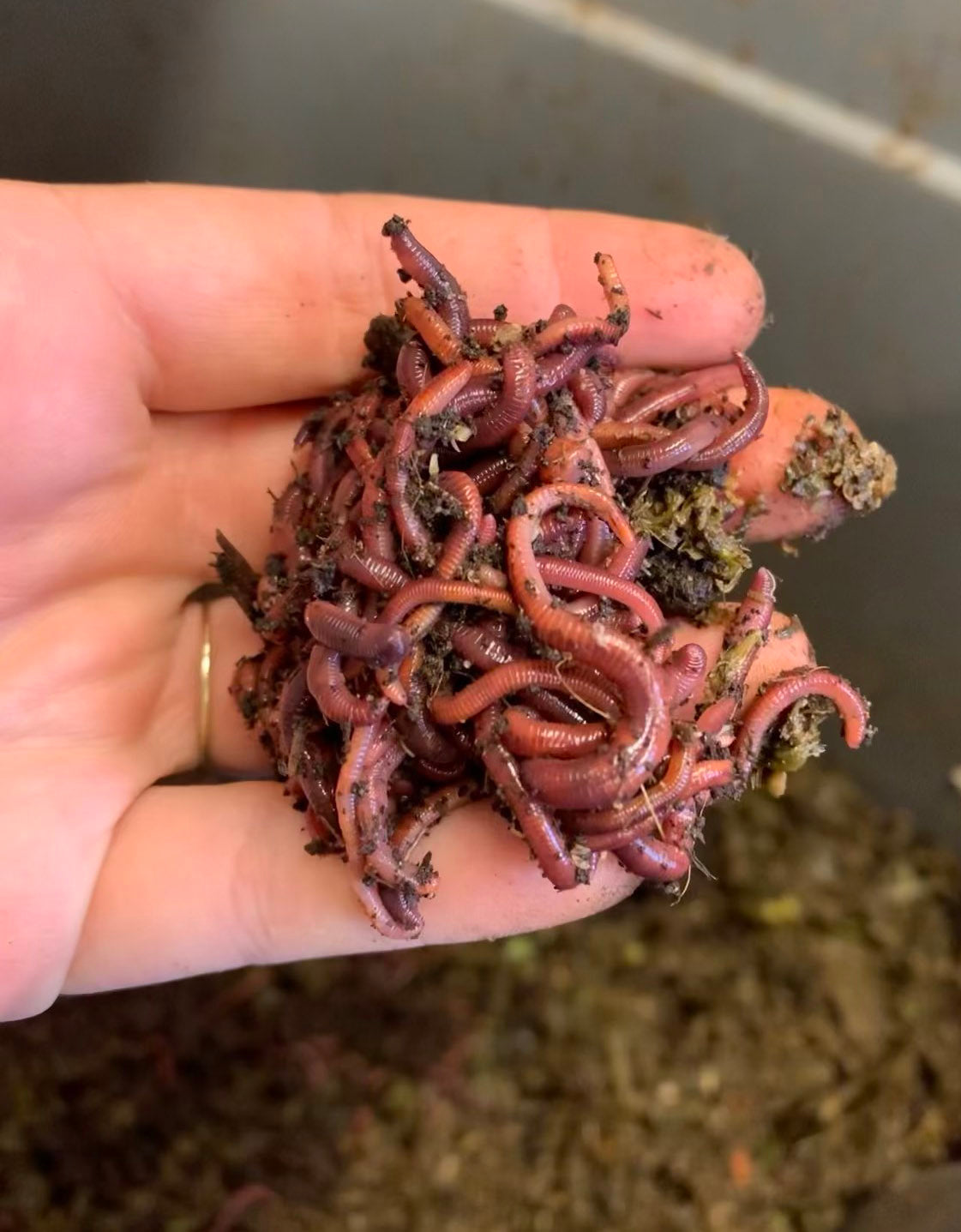How to Maximize Your Red Wiggler Composting Performance for a Greener Garden
How to Maximize Your Red Wiggler Composting Performance for a Greener Garden
Blog Article
Exploring the Devices of Red Wiggler Composting: A Comprehensive Overview to the Process and Its Positive Influence On Sustainable Horticulture Practices
The detailed devices of red wiggler composting, utilizing the unique physiology of Eisenia fetida, present an engaging avenue for boosting sustainable gardening practices. This procedure not just transforms natural waste right into nutrient-dense vermicompost but also promotes a healthier dirt ecosystem via enhanced oygenation and microbial task. As city horticulture gains grip, recognizing the subtleties of this composting method becomes progressively pertinent. However, the journey right into its myriad benefits and best practices is simply starting, motivating a closer examination of how this method can improve our gardening approaches.
Comprehending Red Wigglers
Red wigglers, clinically recognized as Eisenia fetida, are a types of earthworm very related to for their effectiveness in composting natural waste. These worms prosper in nutrient-rich environments, specifically in rotting raw material, making them suitable for vermicomposting systems - Red Wiggler Composting. Characterized by their reddish-brown pigmentation and segmented bodies, red wigglers are smaller sized than typical earthworms, normally measuring in between 3 to 4 inches in size
Their unique physiological qualities improve their composting capabilities; for example, they have a high reproductive price, permitting populations to increase quickly under appropriate conditions. Red wigglers take in organic product, breaking it down through their digestion systems, which results in nutrient-rich castings that function as an excellent organic fertilizer. Their ravenous cravings allows them to process huge volumes of food waste efficiently, considerably decreasing land fill contributions.
Along with their composting expertise, red wigglers play an essential role in soil wellness. Red Wiggler Composting. They aerate the soil and promote the decomposition of raw material, additional enriching the dirt community. Comprehending the features and eco-friendly benefits of red wigglers is vital for any person looking to implement sustainable gardening practices via effective composting methods
The Composting Process
The composting process involves damaging down natural products right into nutrient-rich garden compost, a task that red wigglers excel at because of their specialized digestion systems. These worms take in food scraps, backyard waste, and various other raw material, transforming them into beneficial garden compost via a collection of organic and chemical processes.
At first, the raw material is blended with bed linens products such as shredded paper or dried leaves, creating an optimal setting for the worms. As the red wigglers ingest this blend, they damage it down with their gut, where microorganisms even more break down the material. This procedure produces warmth, advertising microbial activity, which speeds up decomposition.

Advantages of Red Wiggler Composting
Numerous garden enthusiasts and eco-conscious individuals recognize the many benefits of red wiggler composting, making it a prominent choice for efficient waste monitoring. One of the main benefits is its capability you can try this out to substantially reduce natural waste in land fills - Red Wiggler Composting. Red wigglers effectively damage down kitchen scraps and other eco-friendly products, transforming them into nutrient-rich vermicompost that improves soil health and wellness
In addition, red wiggler composting enhances soil framework and fertility. The resulting vermicompost is bristling with useful microbes, which advertise plant growth and improve nutrient retention. This natural plant food not just sustains sustainable gardening methods however additionally lowers reliance on chemical fertilizers, fostering a much healthier ecosystem.
Additionally, red wiggler composting is a space-efficient technique, making it suitable for city garden enthusiasts with limited space. The process can be carried out inside your home or outdoors, permitting year-round composting no matter environment problems. Red wigglers are low-maintenance organisms that require minimal treatment, making them available for beginner garden enthusiasts.
Fundamentally, the advantages of red wiggler composting prolong past waste reduction; they contribute to healthier soils, lasting horticulture practices, and environmental stewardship, positioning it as an important practice in modern horticulture.
Ideal Practices for Composting
For successful red wiggler composting, sticking to finest techniques is necessary to make the most of efficiency and make certain an efficient environment for these worms. It is crucial to preserve an appropriate carbon-to-nitrogen ratio, ideally around 30:1. This equilibrium promotes ideal decay and enhances the worms' health and wellness. Incorporate a mix of environment-friendly materials, such as veggie scraps, and brown products like shredded paper or cardboard.
Next, screen dampness levels, intending for a wet, sponge-like uniformity. Extremely wet conditions can cause anaerobic decomposition, while extreme dry skin might hinder worm task. In addition, ensure appropriate aeration by transforming the compost regularly, which helps stop compaction and permits sufficient oxygen circulation.
Temperature is another critical factor. Maintain a variety of 55 ° F to 77 ° F(13 ° C to 25 ° C) to promote worm activity and microbial development. Ultimately, avoid introducing imp source meat, milk, and oily foods, as these can draw in bugs and create odors.
Enhancing Lasting Horticulture
Sustainable gardening symbolizes an alternative approach that balances ecological principles with practical gardening methods. By incorporating techniques such as red wiggler composting, gardeners can significantly enhance their techniques, cultivating a much more resistant ecological community. Red wigglers, renowned for their effective disintegration capabilities, convert organic waste right into nutrient-rich compost, consequently enhancing the soil without relying upon chemical fertilizers.
Executing lasting gardening methods, such as crop rotation, buddy planting, and mulching, further complements the benefits of composting. These methods not only enhance dirt framework and fertility yet likewise promote biodiversity, attracting valuable insects and organisms that add to plant health. Using indigenous plants can lower water intake and decrease maintenance, lining up with water conservation efforts.

Verdict
Finally, red wiggler composting stands for an important approach for enhancing sustainable horticulture methods. The effective digestion of natural waste by Eisenia fetida not only generates nutrient-rich vermicompost but also cultivates improved soil health and wellness and structure. By advertising aerobic decay, this strategy reduces smells and waste while lowering reliance on chemical fertilizers. Ultimately, the fostering of red wiggler composting can dramatically add to green gardening, profiting both city and amateur garden enthusiasts in their growing initiatives.
The detailed devices of red wiggler composting, making use of the special physiology of Eisenia fetida, present a compelling method for enhancing lasting gardening practices. Understanding the attributes and environmental advantages of red wigglers is crucial for anyone looking to apply lasting gardening techniques via reliable composting methods.

In final thought, red wiggler composting stands for an important technique for improving sustainable gardening practices. Inevitably, the adoption of red wiggler composting can substantially contribute to environmentally friendly horticulture, benefitting both metropolitan and beginner garden enthusiasts in their growing efforts.
Report this page